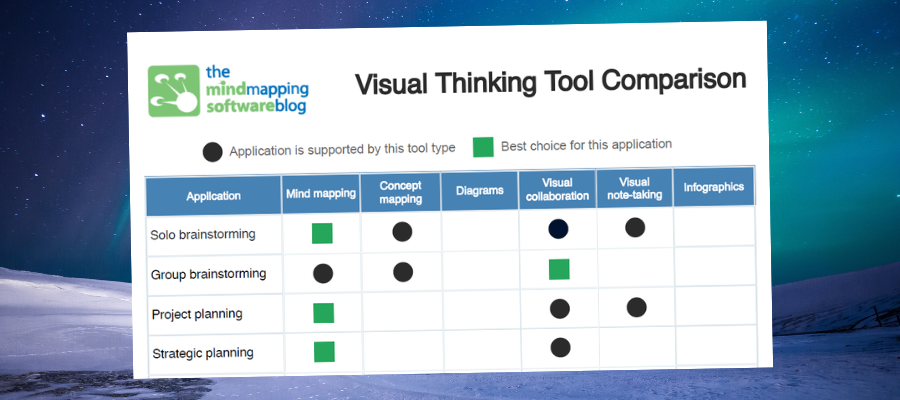
The field of visual thinking tools has exploded during the last decade. With so many choices, it’s hard to decide what type of tool is the best fit for your needs.
Remember the Visual Thinking Tools Roadmap I published earlier this year? It contained over 100 tools – crazy, right?
A solution for the confusion
One practical way to solve this challenge is to begin with the application for which you need it – your job to be done – and let that drive the type of tool you select to solve it.
That’s why I created the new Visual Thinking Tool Comparison Chart. It includes six types of tools and 16 common business applications, arranged in a concise dot grid. This diagram makes it easy to start with a business need and zero in on the classes of tools that can help you to get that done. It can save you hours of searching and evaluation.
Not only that, it shows you tools that are CAPABLE of supporting each application (but which may not be the most efficient at doing so) plus the one in each category that I believe is your best choice. What do I mean by that? Let’s take an example:
Diagramming, infographic and visual collaboration tools enable you to make mind maps, as one of the many types of diagrams they support. But they don’t do so as well as a native mind mapping tool.
Tool types in the Visual Thinking Tool Comparison Chart are:
- Mind mapping
- Concept mapping
- Diagrams
- Visual collaboration
- Visual note-taking
- Infographics
Applications included in the Visual Thinking Tool Comparison Chart are:
- Solo brainstorming
- Group brainstorming
- Project planning
- Strategic planning
- Systems thinking
- Goal setting
- SEO/website architecture
- Information architecture/data design
- Content creation/report writing
- Presentation preparation
- Process mapping
- Creative problem-solving
- Personal knowledge management
- Marketing campaign planning
- Decision-making
Fill out the form below to download your free copy of the Visual Thinking Tool Comparison Chart.

Leave a Reply